
Simon Evans01/06/21
4 min read

“Necessity is the mother of invention”. A proverb which is becoming increasingly pertinent to charities’ marketing and fund-raising efforts.
The audience shift to online - accelerated by the covid pandemic - has left many in the third-sector playing catch-up.
But progressive charities are now putting digital at the heart of their strategies - and this means planning campaigns in a different way. Instead of organising physical events and using online platforms to drive people to attend, the events - or versions of them - can take centre stage virtually.
The benefits of adopting such an approach are:
While the strategic planning of a campaign’s aims and objectives remains fundamental - this guide is an extremely useful resource - its tactical execution has shifted with the result destined to be planning for how campaigns look digitally and how they can then be supported offline.
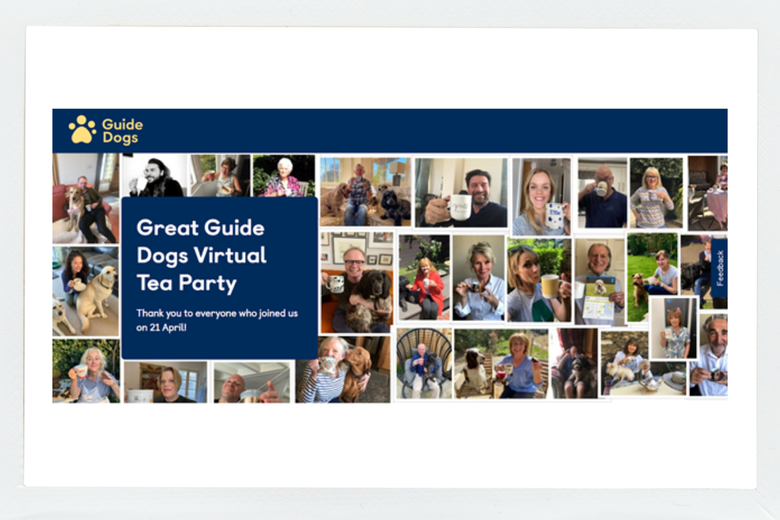
How practical would it be to get Andy Murray, Eddie Izzard, Gregg Wallace and thousands more together for a physical tea party?
In April 2020, that’s exactly what Guide Dogs was able to achieve through its virtual tea party event.
And they gathered so many people together that they were able to have a crack at entering the Guinness World Records.
Virtual tea parties can now be held by the charity’s supporters, who can book a 15-minute slot with a VIP guest - that’s only possible by digital means as the famous faces can attend a number of parties in one day from the comfort of their own home.
This also means that anyone, anywhere in the world can host their own party with friends and family in different countries while supporting the charity.
The reach of the event, therefore, is not limited by physical constraints. Face-to-face gatherings remain very important - when allowed - but it doesn’t take much imagination to see how the virtual event can spread the word far beyond the traditional means.
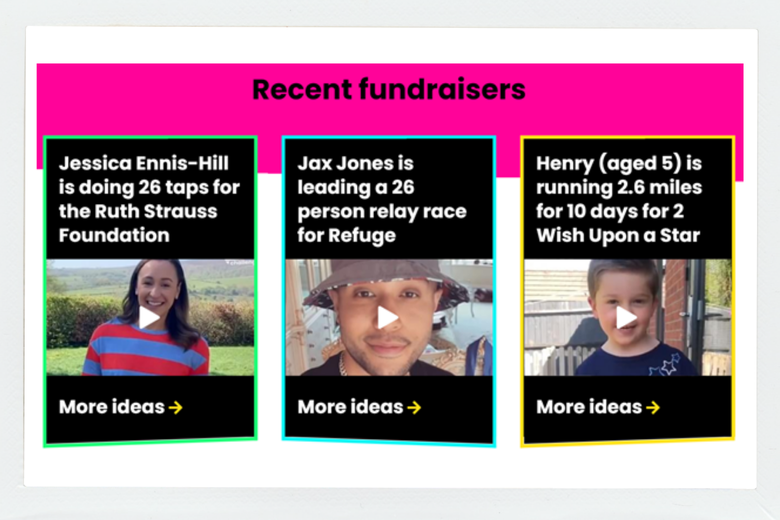
Another big event which had to think on its feet was the London Marathon, the world’s biggest one-day fund-raising event, which raised more than £66.4 million for thousands of charities in 2019.
Cancelled in 2020, the team behind it moved quickly to create an online campaign based on the 26-mile race distance. Thus, the 2.6 Challenge was born.
The campaign raised more than £11m and, while well below the 2019 level of the physical event, in its first year (hopefully, the challenge will continue) it shows how digital can ignite the fund-raising passion of all of us.

Don’t forget, also, that the race itself can accommodate only a certain number of runners. The 2.6 Challenge faces no such restrictions plus it can attract willing participants from across the globe.
This might not be a digital-first campaign but it doesn’t take much imagination to see how the challenge can draw in thousands, if not millions, of followers to become the dominant element of the overarching campaign.
One other thing to point out is its presentation. There, on the website’s homepage, is the image of five-year-old Henry alongside Olympian Jessica Ennis-Hill and DJ Jax Jones. That’s a really nice touch and shows how the online world can bring the public and celebrities together and present them as equals.
The London Marathon takes place on one day of the year - but, digitally, it could become a year-round campaign.
The online world moves faster than offline, you tend to have more control and can get campaigns live in days.
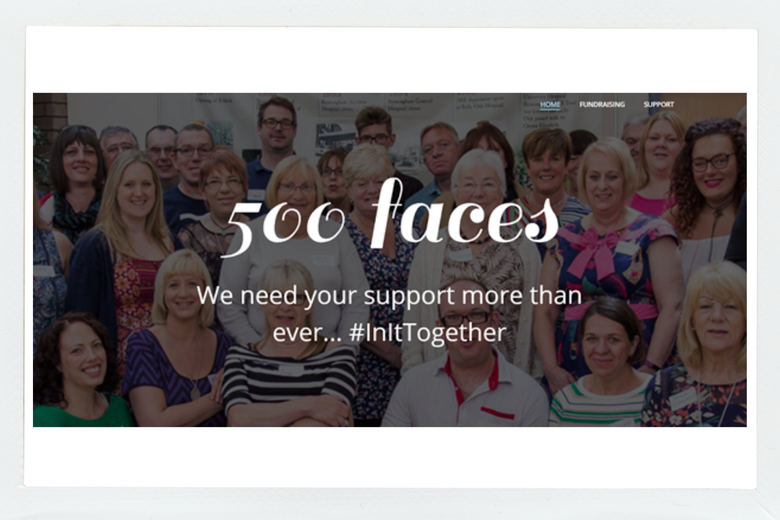
When the covid pandemic forced the monumental shift in our lives, charities were faced with the daunting prospect of seeing much-needed physical fund-raising events cancelled.
Some reacted better, and quicker, than others to this crushing blow and one of those was the Pituitary Foundation, which describes itself as ‘a UK patient support organisation offering expert medical support and information on a range of diseases’.
More than a third of the foundation’s income comes from events held during four months of the year so the charity moved at speed to create an online campaign in an effort to replace those funds which would be lost.
From initial idea to campaign launch took just eight days.
The #Pituitary500Faces was created, asking 500 supporters to donate £100 each. In return, those donors had their face published on a dedicated website.
More than £74,000 was raised as 304 supporters rallied to the cause, but more is required and the charity has reopened the campaign while lowering the minimum donation to £50 - again, a fast response to a pressing need.

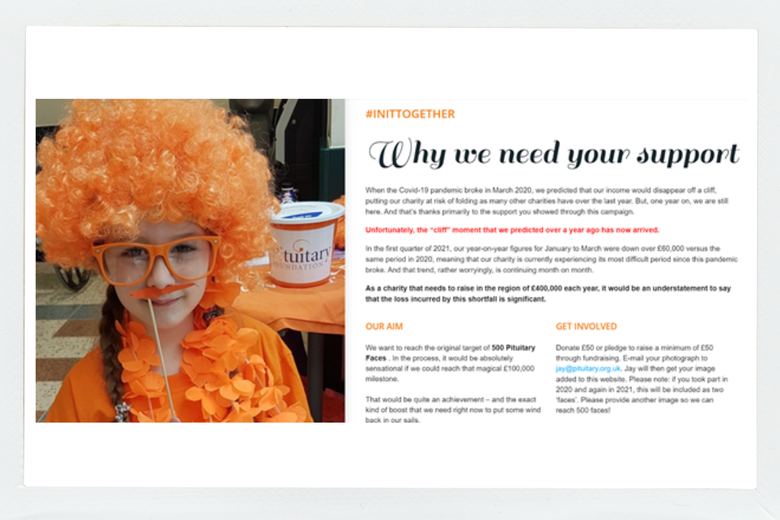
In this article, digital and marketing consultant, Zoe Amar, spoke to the foundation’s head of fund-raising, Jay Sheppard, who said: “The campaign went from ideas stage to implementation at a rapid rate.
“The idea was on the Friday, the website was ready by the following Wednesday, we had a lockdown fund-raising ideas guide made up by the Thursday and we launched the campaign on the Saturday."
Tapping into digital trends and innovation
The online world is a breeding ground for innovation and it provides charities with the chance to tap into technology and trends.
Well-known organisation, Great Ormond Street Hospital, did just this when they latched on to, and became the official partner of, #Whamageddon.
For the uninitiated, #Whamageddon is a game that has sprung up during December. Participants have to avoid hearing Last Christmas by Wham. If the song does happen to tickle their eardrums they have to declare that they’ve heard it and it means they’re out of the game.
GOSH decided to jump on the trend and through a partnership with Twitter, weaved the game into a Christmas campaign.
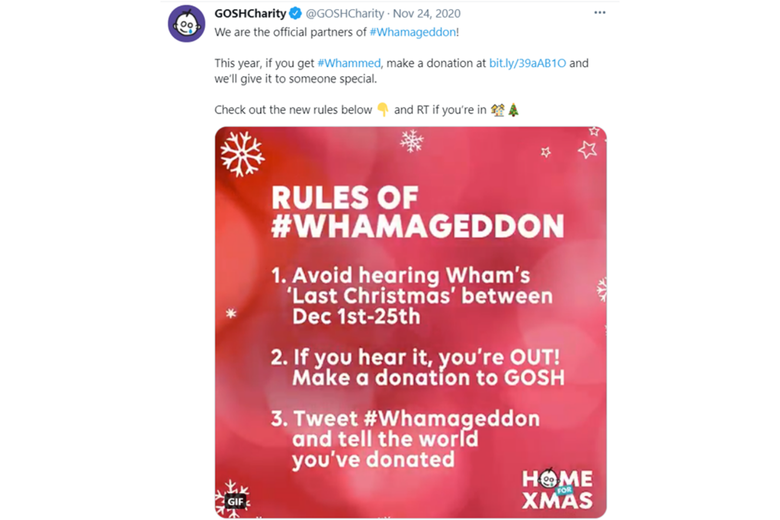
As soon as players heard the song, they were asked to make a donation and then tweet that not only were they out but that they’d also pledged cash to the charity.
Refuge was another organisation to jump on a lockdown trend, creating a downloadable background for supporters to use on their Zoom, Microsoft Teams or Google video calls.
The background contained a QR code to allow those on the call to directly donate, an amazing piece of innovation from the charity.
More inspirational campaigns - and therefore ideas for your charity - can be found on this Econsultancy article.

While the disruption the pandemic brought to the world forced a shift in behaviour for some, we now live in a world where our younger generations have been brought up using online channels as their go-to method of interaction.
Research shows that the demographic known as Gen Z - those born between the mid-to-late 1990s and the early 2010s - are now of an age where they want to a) donate more and b) primarily engage online.
Charities, therefore, simply must look to the digital world for ongoing growth and taking a digital-first approach to campaigns can be a smart way of getting the entire organisation to take digital transformation seriously.
One of the other key points of a digital-first approach to campaigns is to ensure your email communications are up to scratch.
Email remains hugely powerful but many charities are still not making the most of it and are therefore missing out on donations and increased engagement opportunities.
This excellent article from Alex Lloyd, co-executive director of Forward Action, taps into his experience of running email campaigns for the Labour Party.
In it, he says that a recent report found that:
Among other points, his advice includes:
The year 2020 showed what can be achieved online - and how a digital-first approach can generate increased reach, be pulled together quickly and make use of technology and trends.
Campaigns can be held across the year, across the globe and across numerous online - and offline - channels.
The learnings of 2020 have the potential to stand progressive charities in good stead for the future.